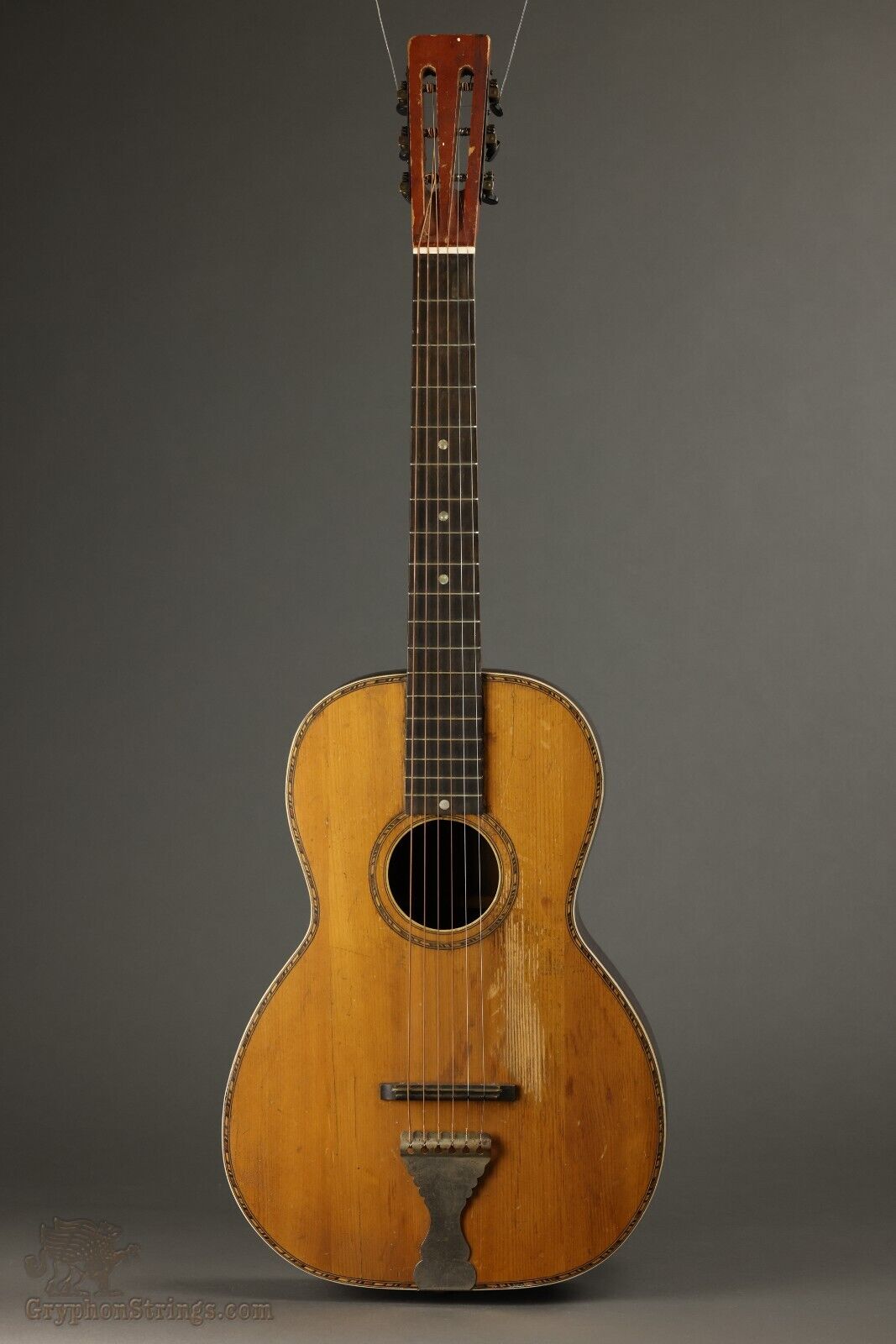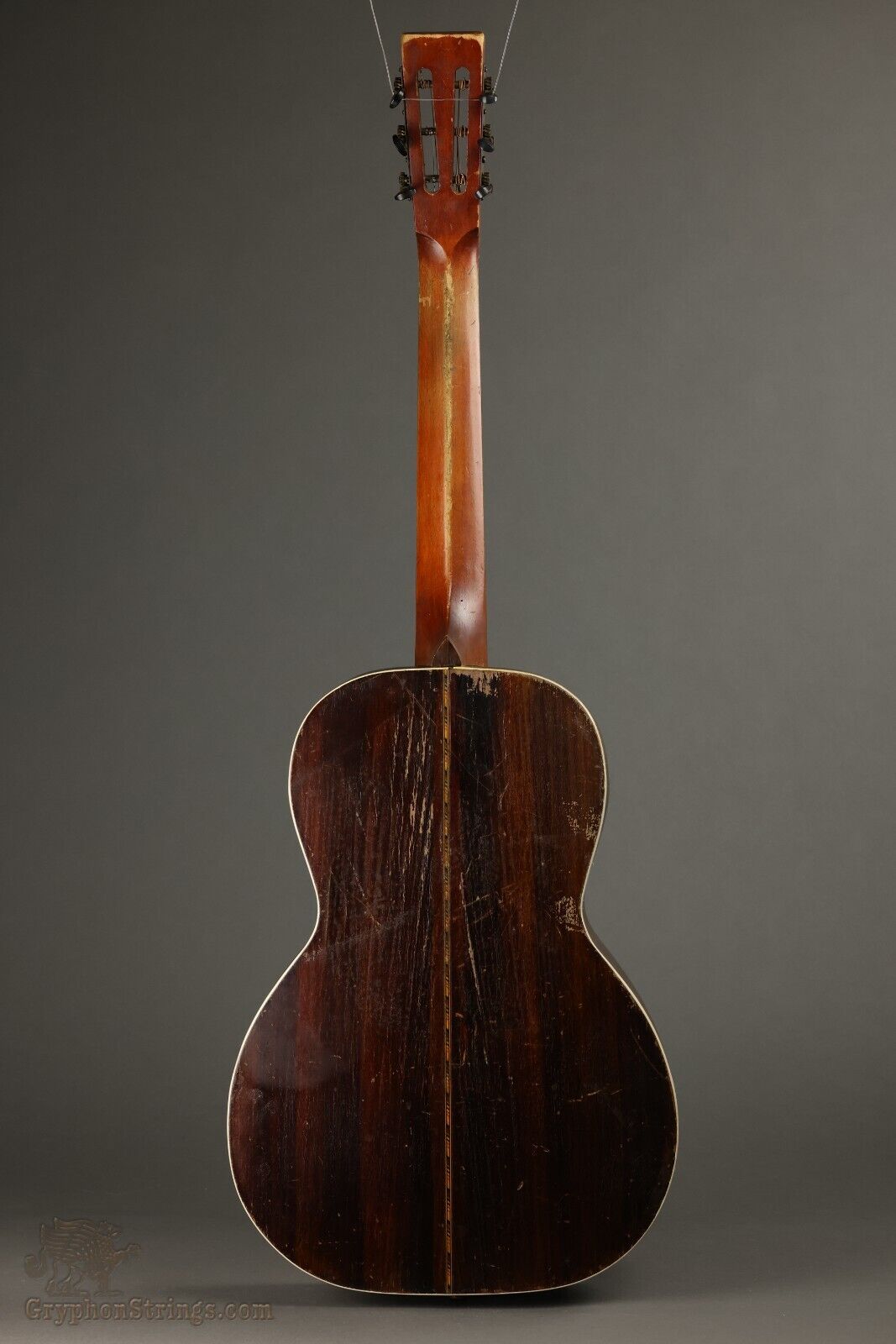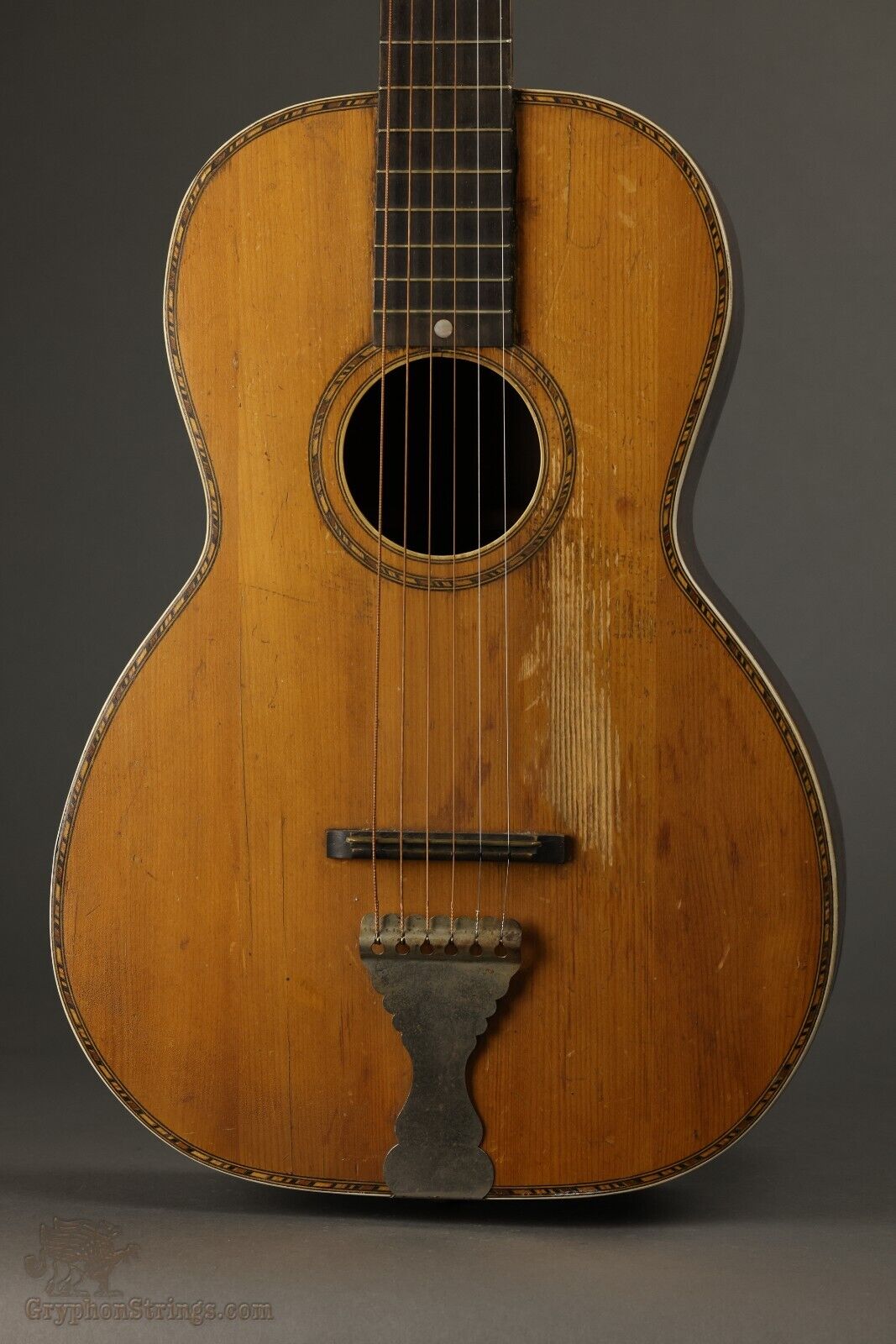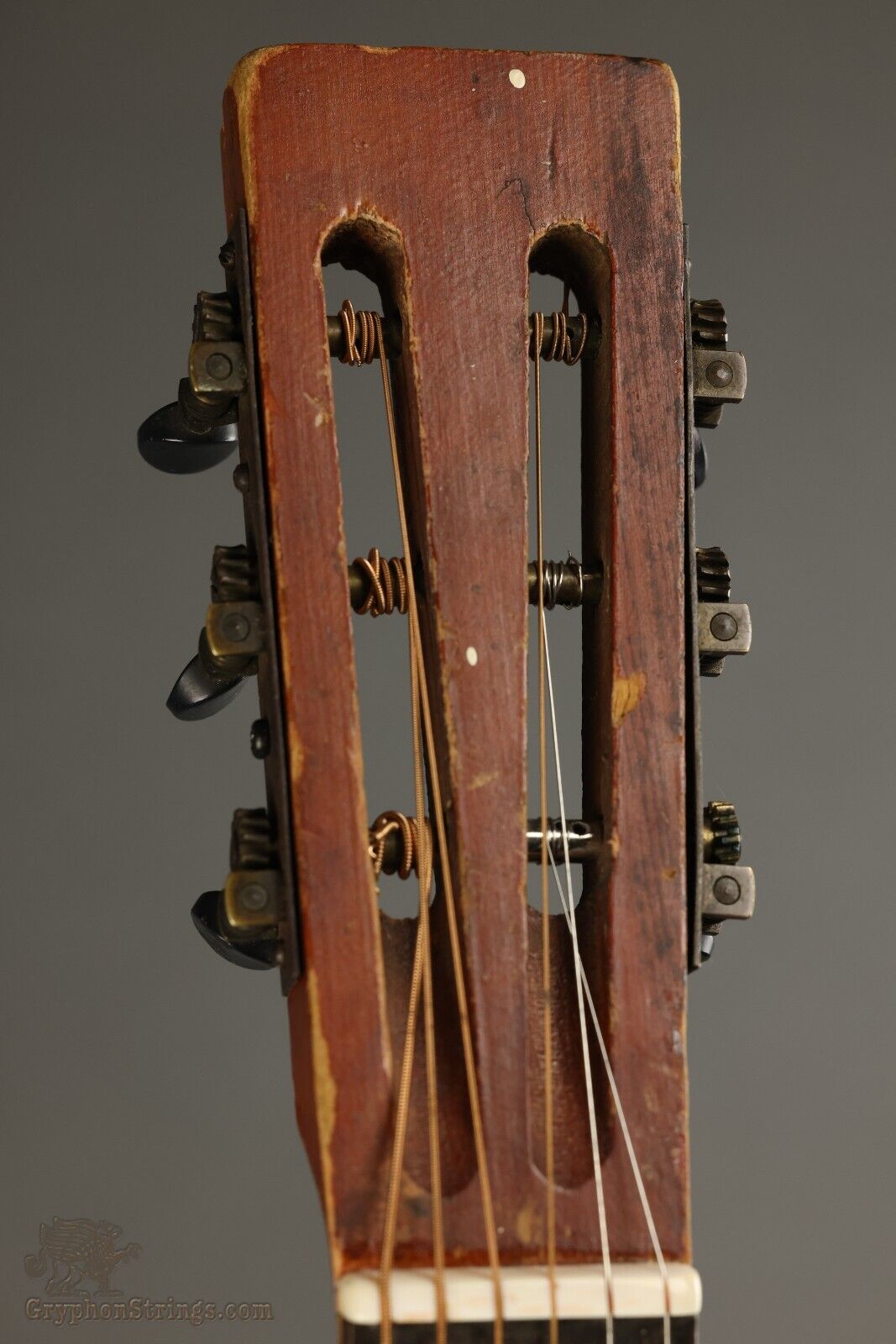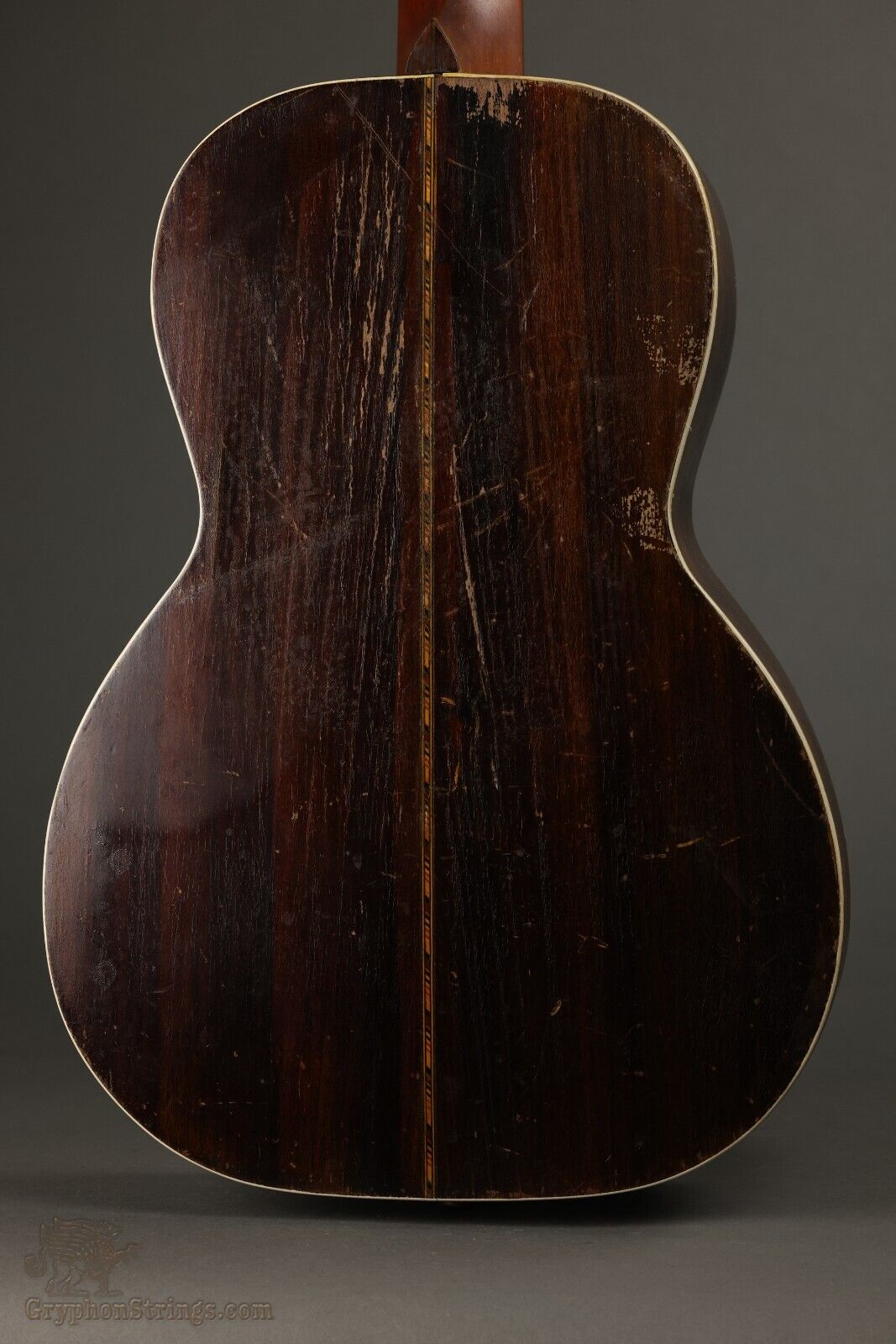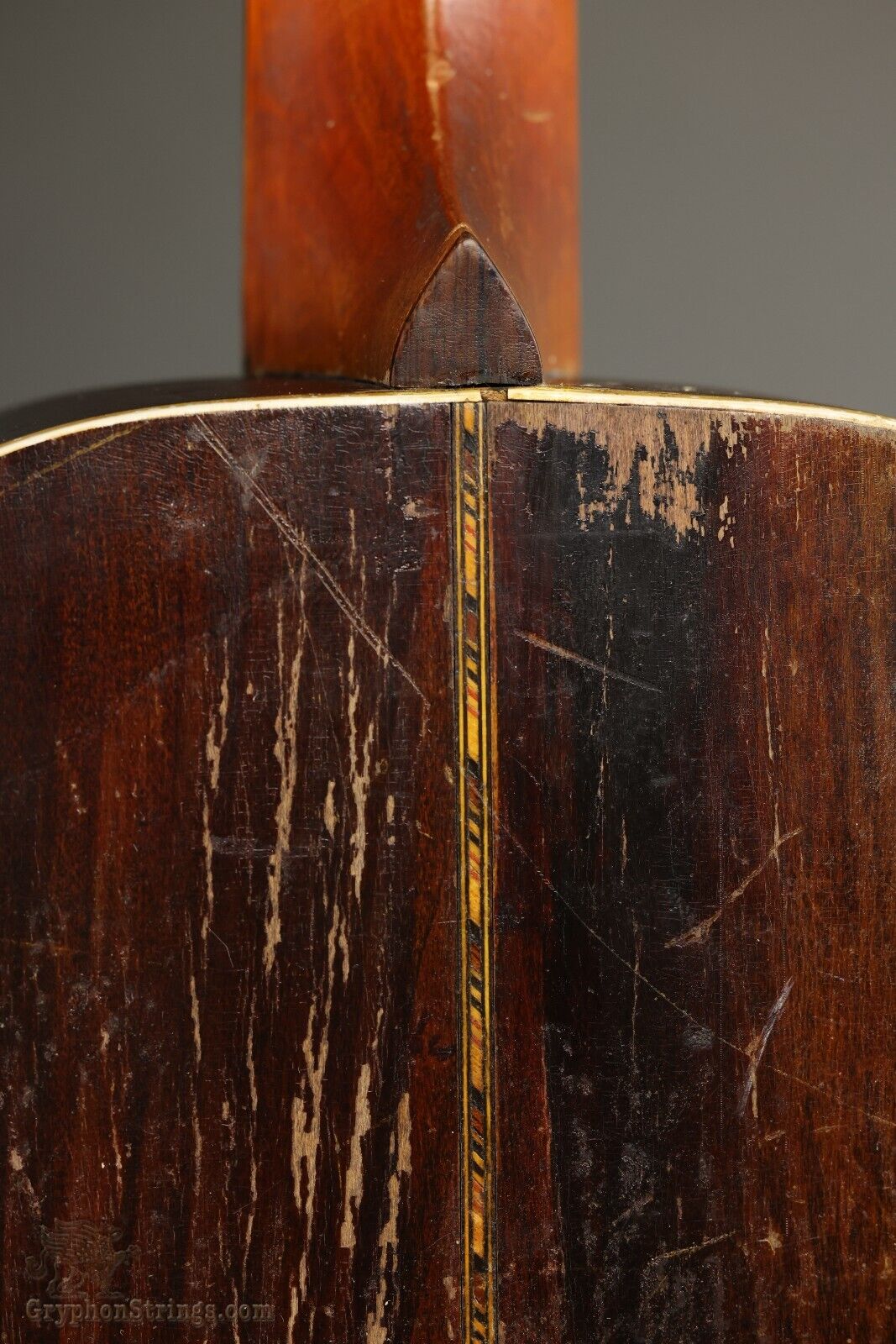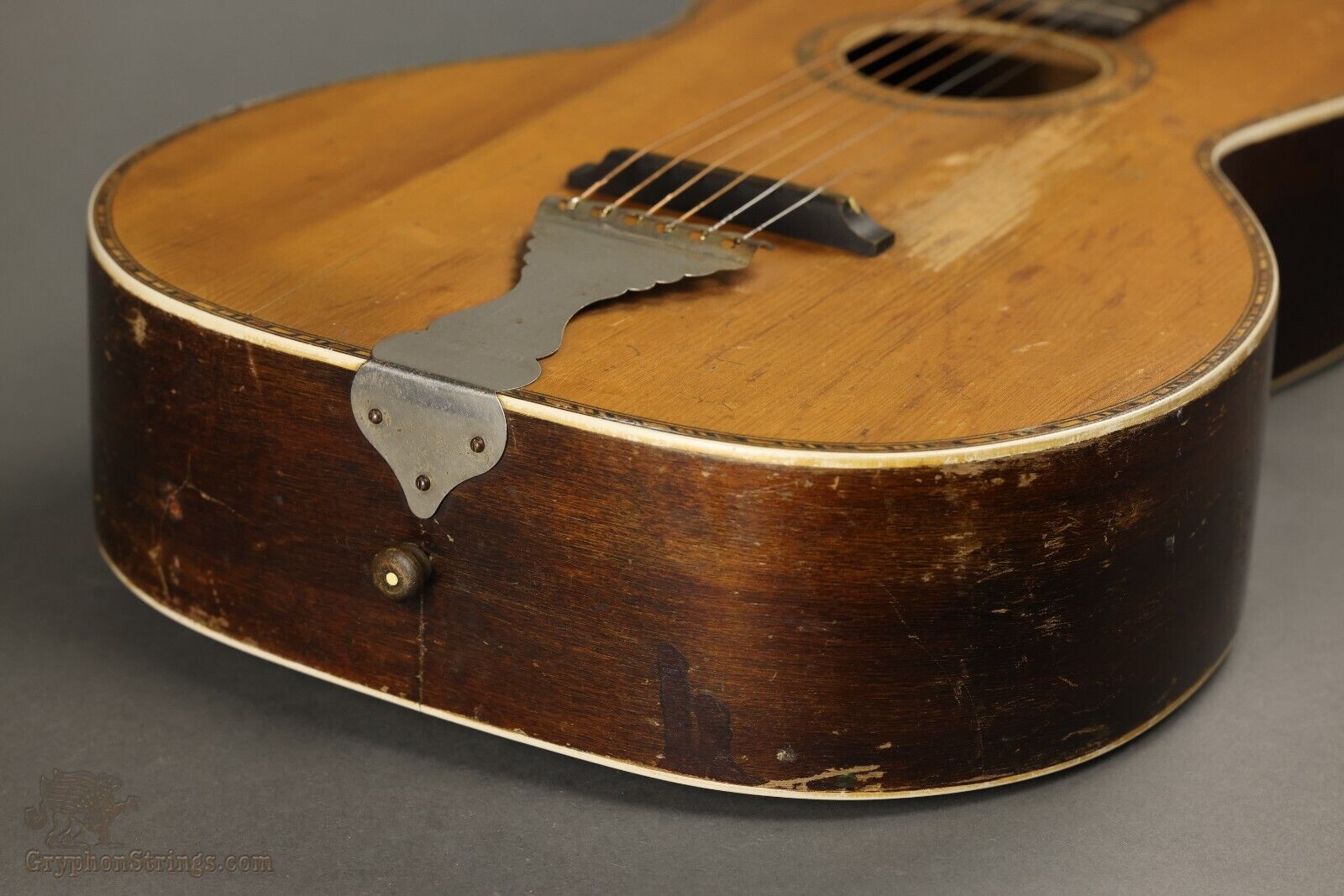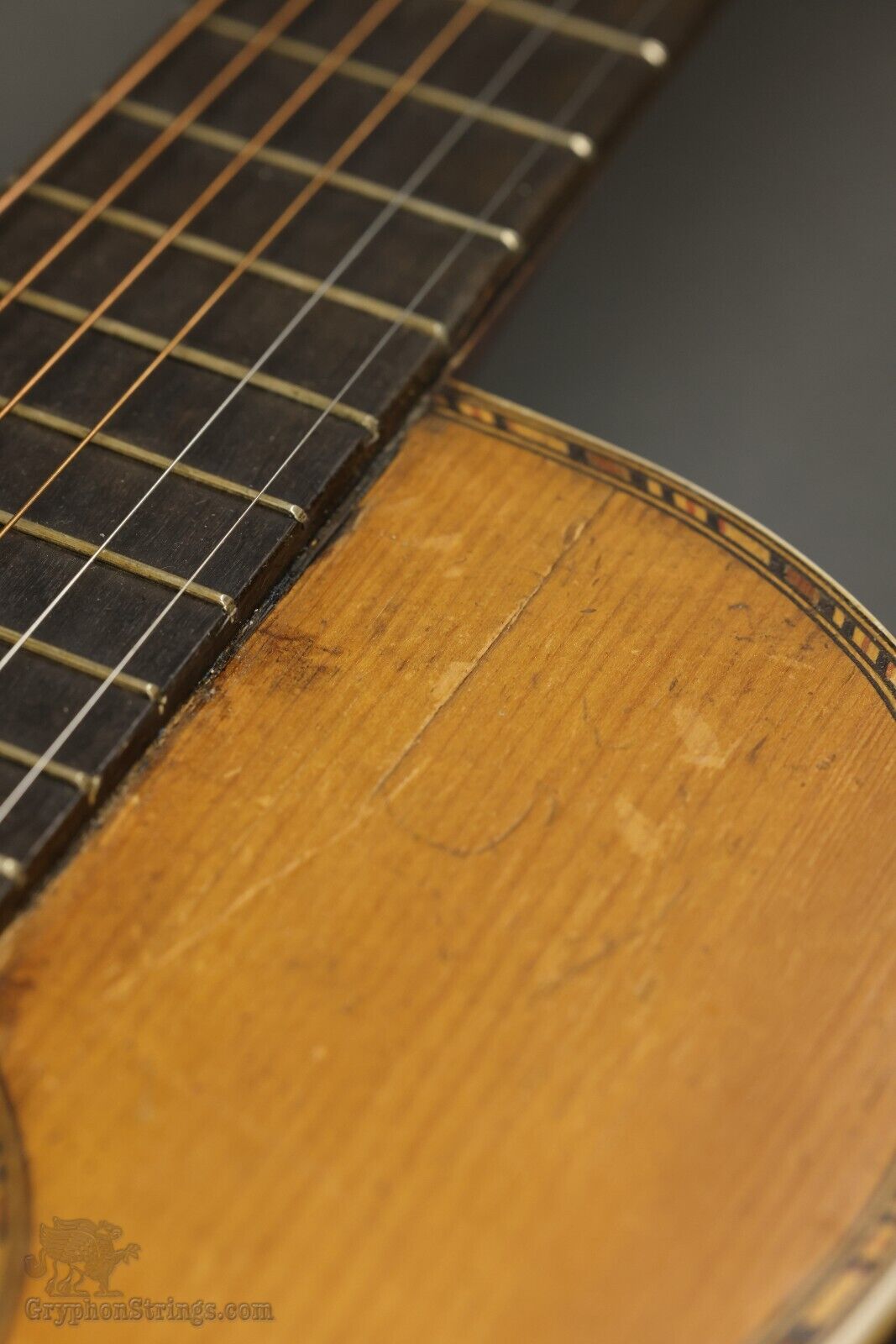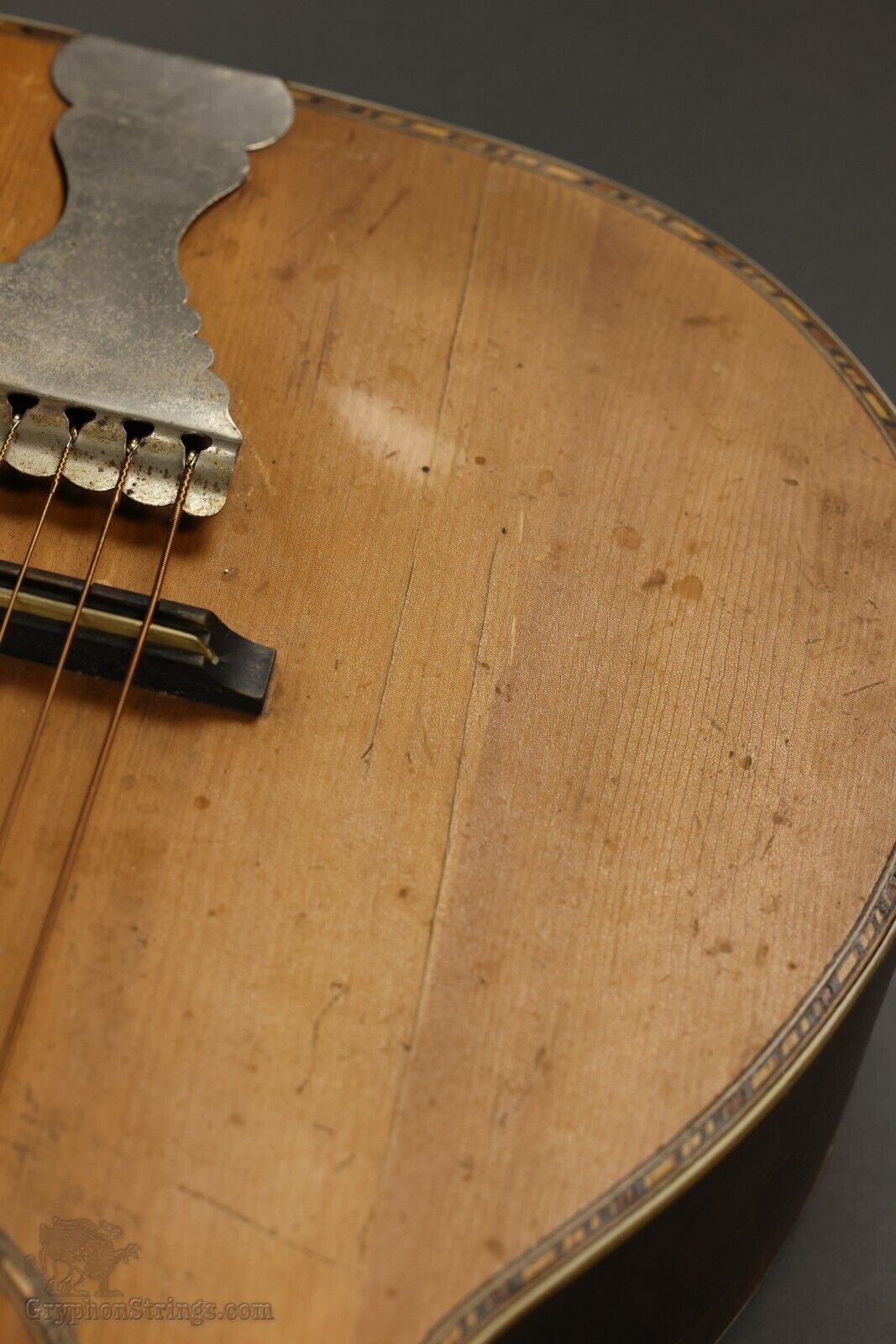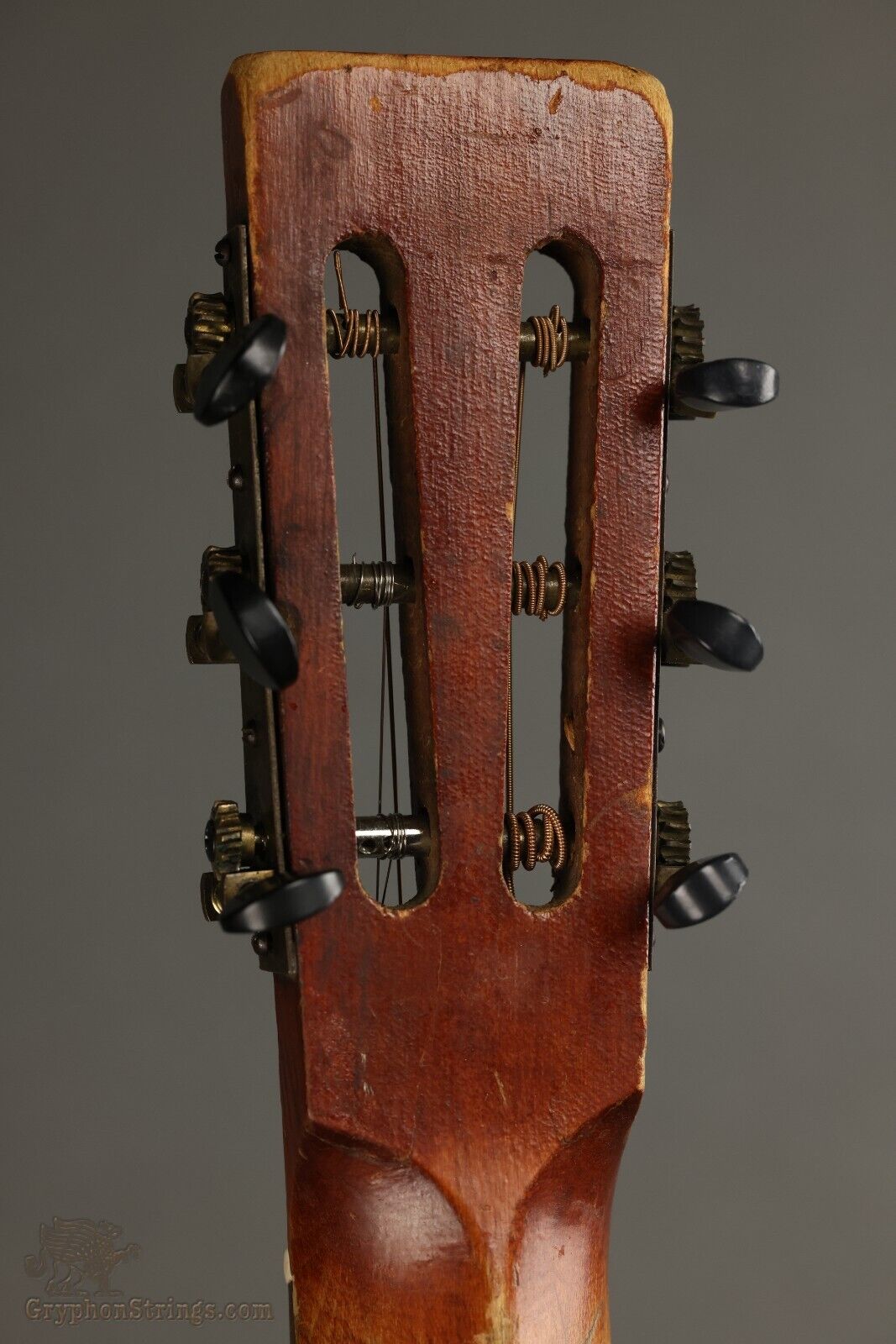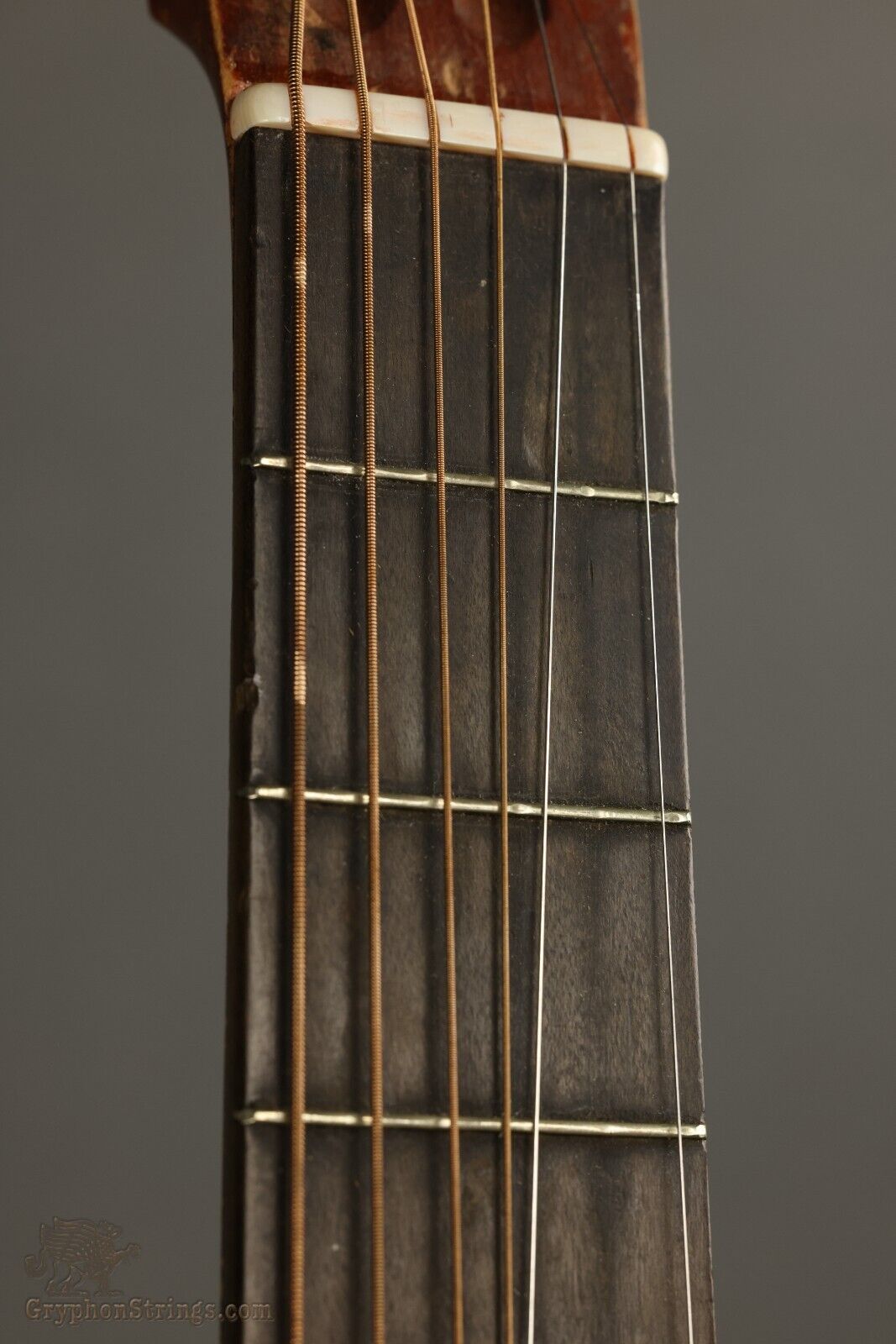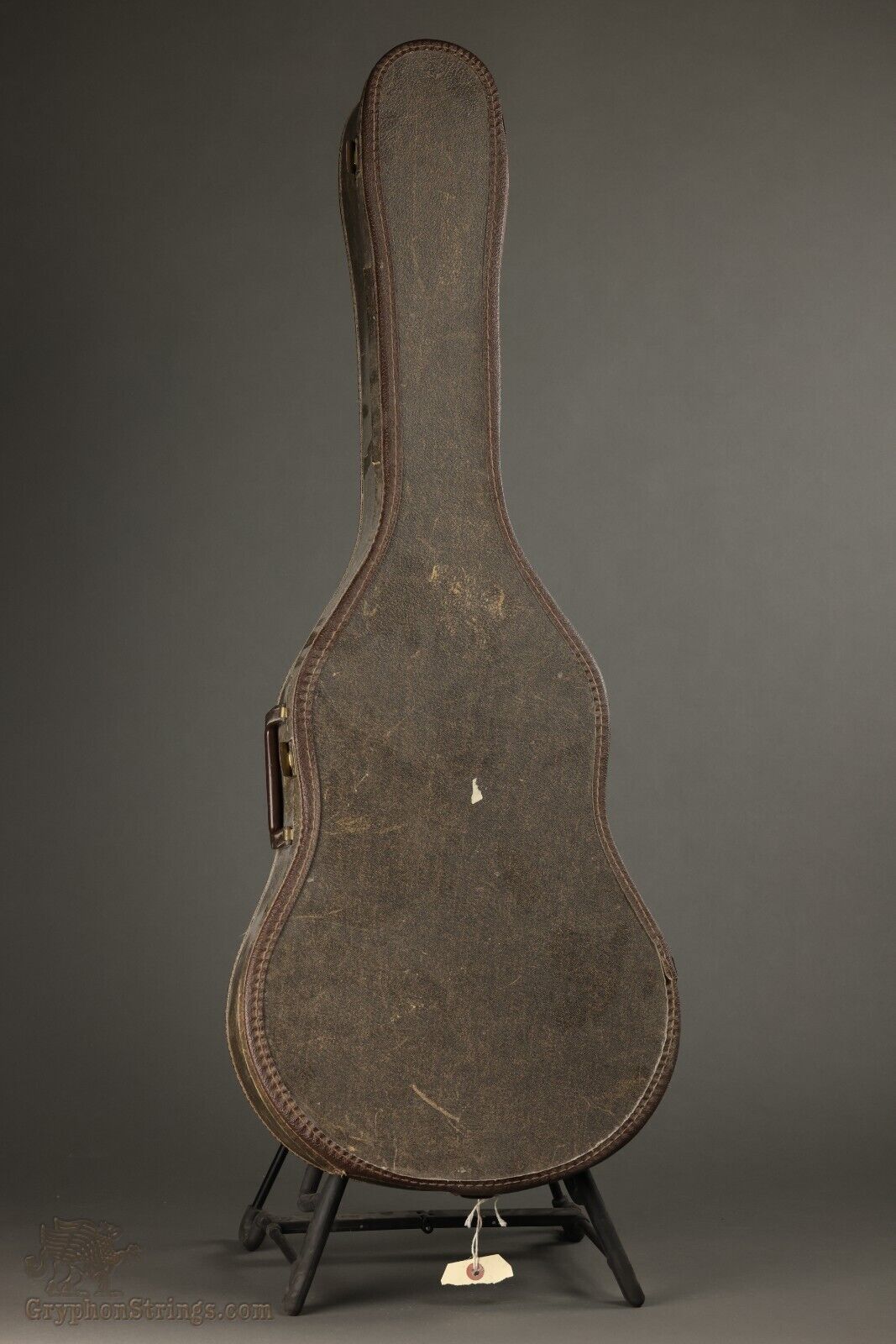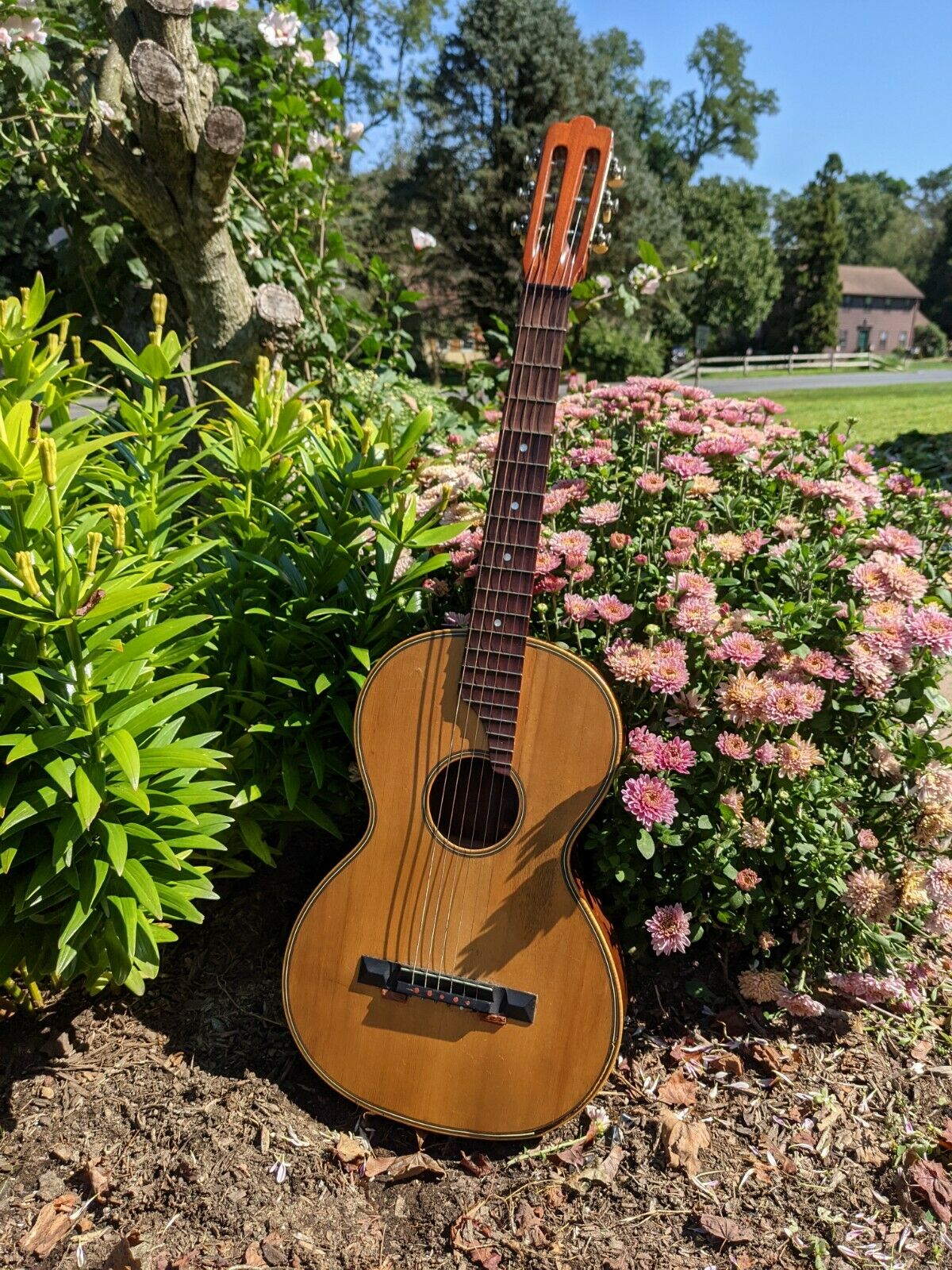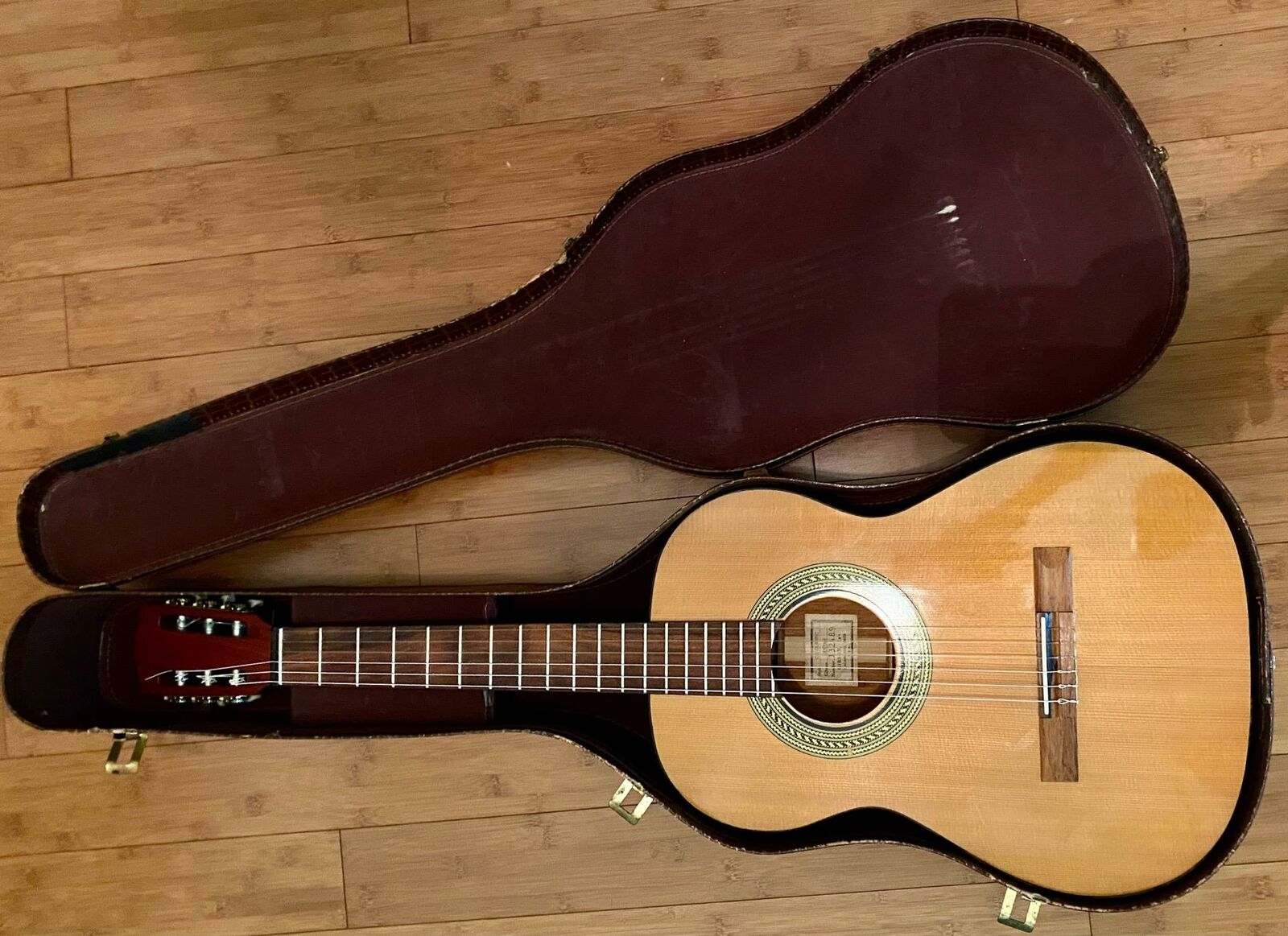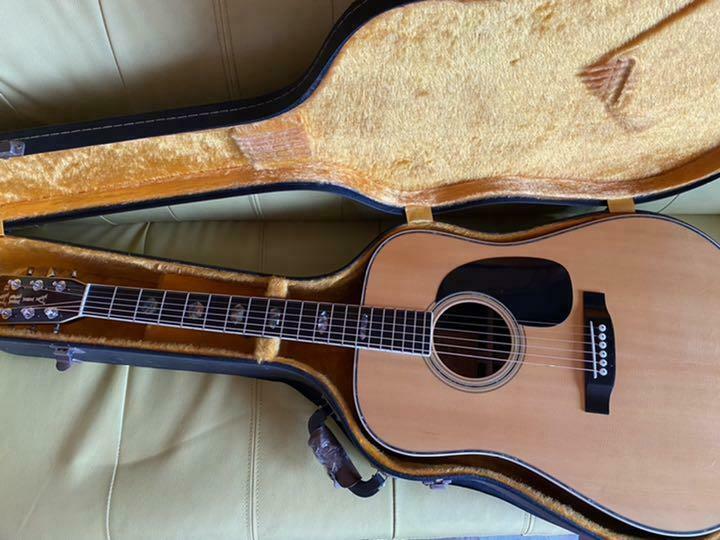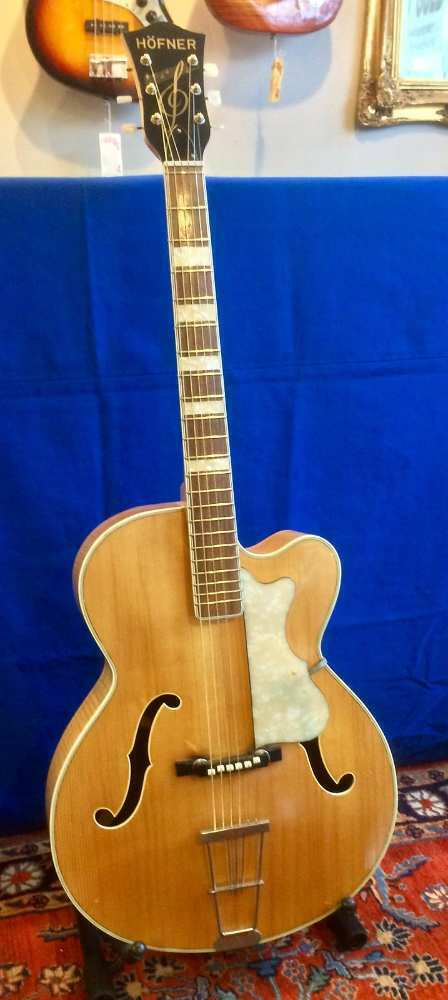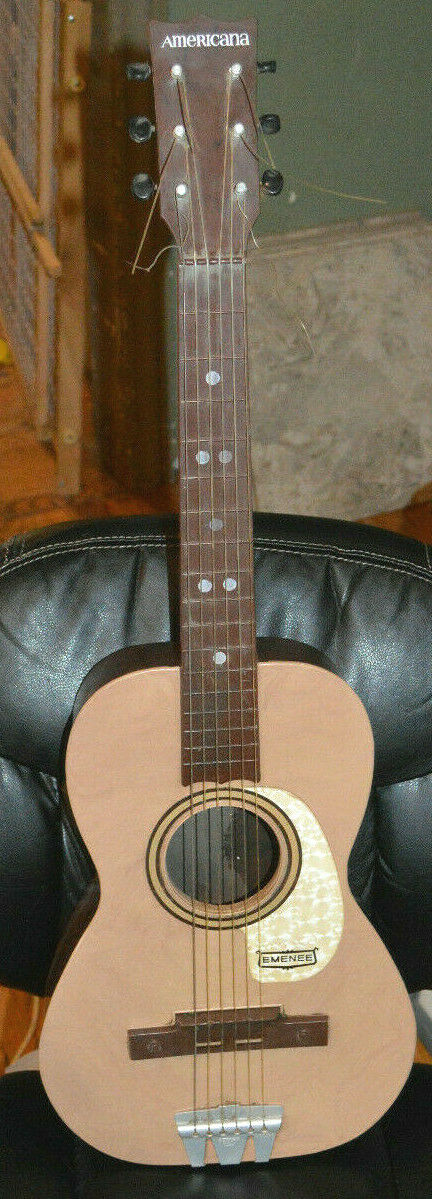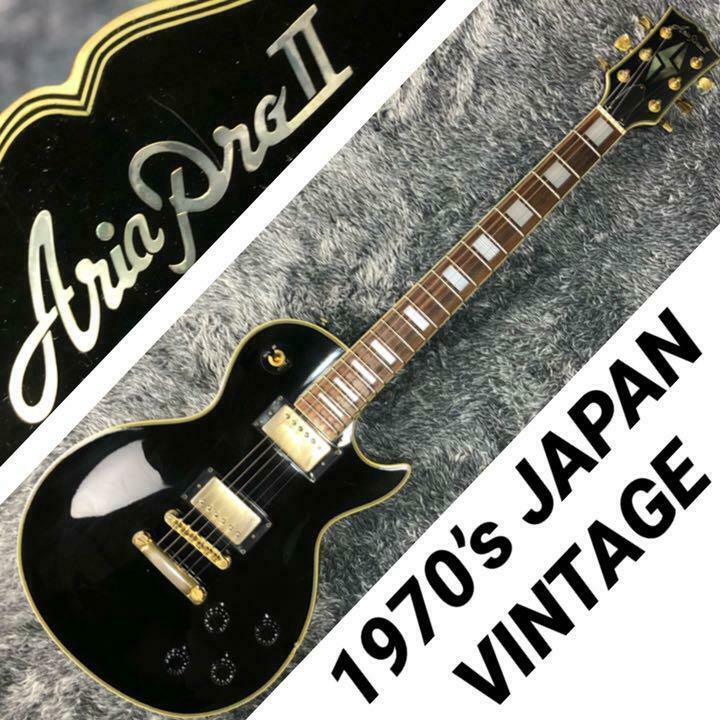-40%
Circa 1900 Regal 20th Century Brand Model 259 Parlor Guitar
$ 158.4
- Description
- Size Guide
Description
We’re not 100% sure who made this unbranded parlor guitar, but it has the look of a 20th Century brand, an inexpensive line of guitars Regal made from 1900 to around 1904. It appears to be a model 259, which was at the upper end of the 20th Century line. This guitar is in pretty rough cosmetic shape–it was ridden hard and put away wet as the cowboys say– but structurally it has held up very well over the decades and is quite playable. The top is solid spruce and the back and sides are birch, or perhaps maple, that has been “fancily grained in imitation of rosewood,” as the 1900 catalog put it. The neck looks to be made of maple, or perhaps birch, and the fretboard is the typical dyed, or ebonized, hardwood that was common on inexpensive guitar at the time. The multi-colored purfling around the top and soundhole is in great shape. The original frets don’t show much wear, which is surprising given how much this guitar was played, and are well-seated and show no signs of looseness. The nut measures 1 ¾”, the string scale is 24 ⅛” and the lower bout is 13-inches wide, just a bit smaller than a Martin 12-fret 0-size. The neck has a very pronounced V-shape and is nice and straight. The pearl dot at the end of the fingerboard conceals a small bolt that connects to the top, and it appears the neck was reset years ago (which explains the good neck angle).The top has three cracks that have been glued but only the one near the tailpiece as been cleated. Two of the cracks are on the bass side between the bridge and the lower bout and each is about 5 ½” long. The third crack is 2” long and it’s in the upper bout on the treble side about about 1 inch from the fretboard edge. The back and sides appear to be free of cracks, but the scratches and painted wood make it hard to tell. There are no signs of repair or cracks on the interior. The guitar is ladder-braced and while the top is slightly wavy it appears very stable (in catalogs of the period flattop guitars like this with a tailpiece and small bridge were supplied with steel strings, it appears this was intended for steel and has survived steel string tension very well). Overall, this is a sweet sounding little guitar with the dry, focused tone we expect from ladder-braced guitars from this era. Best of all, the string action is low and it's very playable just as shown. Includes an older chipboard case.
